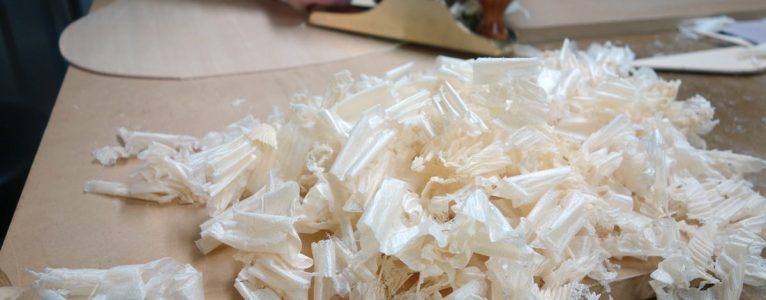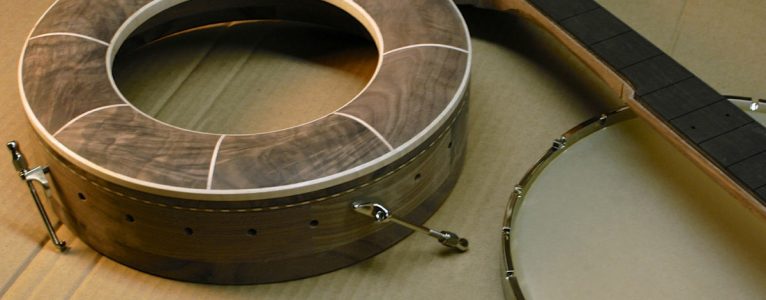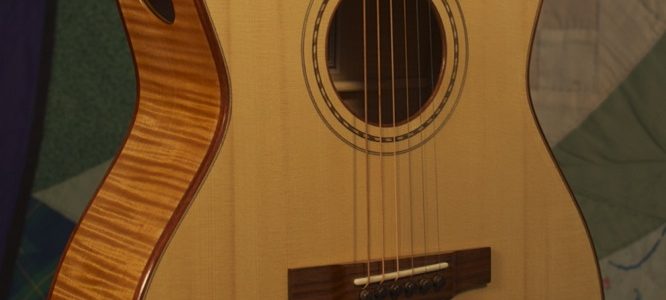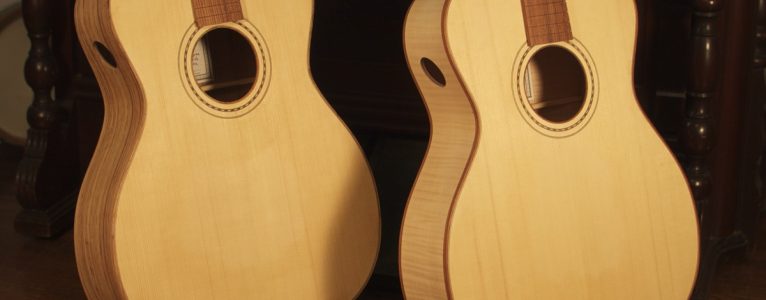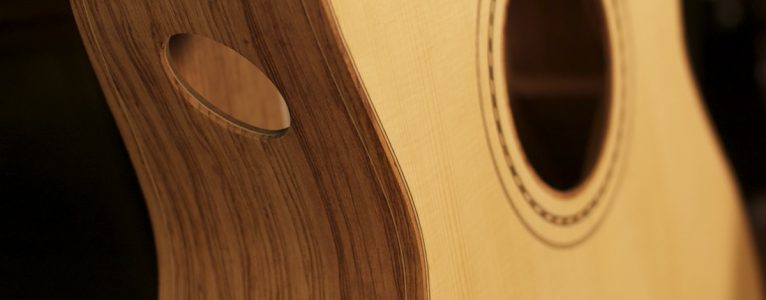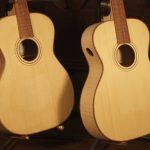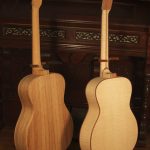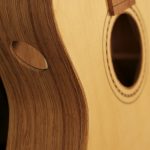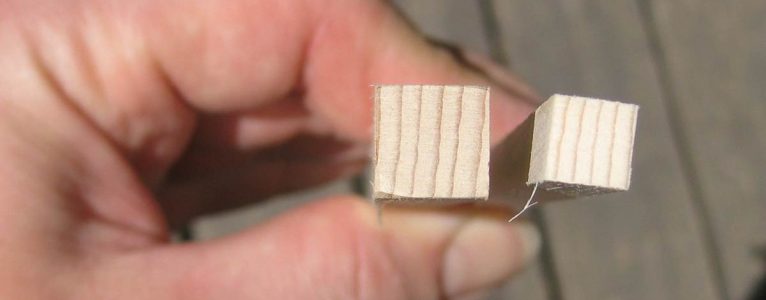
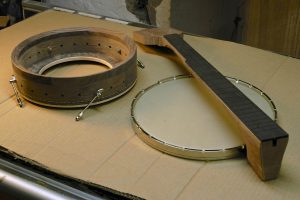
Several years ago, Amber heard John Hartford playing a banjo that sounded as incredible as his playing. It was mellow without being tubby, and had tons of tone. She did some research and found that the banjo was a modern instrument that featured a wooden tone ring. Continue reading “Don’t Judge Me (I’m Building a Banjo)”
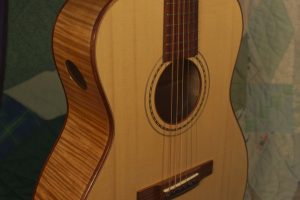
I put the finishing touches on two orchestra model guitars around the holidays, and they sounded great right away.
I tweaked a few details from the earlier versions, including making some minor changes to the bracing. About two years ago, I was talking to local violin maker Tom Verdot, who asked about trying some hybridization between the way classical guitar soundboards and steel string soundboards are braced. Continue reading “New Features and a New Model”
This is a wonderfully balanced guitar with great string and note separation. The palo escrito sides and back glow under the French polished finish. In addition, I’ve added a sound port for the player, solving one of my biggest complaints with rosewood guitars: the player can’t gauge the guitar’s sound accurately, especially in loud or large rooms. You’ll know what you’re doing right (and occasionally wrong, maybe) with this guitar. \
This is a huge-sounding guitar with a very forward, focused sound. The maple reinforces the trebles, producing the thick mids and trebles that work beautifully for melodic flat- or finger-picking. In addition, I’ve added a sound port for the player which provides a high-resolution picture of what your playing sounds like. (I can’t wait to try out the sound port in a loud, PA-monitor-less dance situation. Maybe I’ll finally be able to tune!)
I’m rounding third base on this pair of orchestra model guitars. True to form, I’m building them as an identical pair except for one variable. This time, the difference is the back and sides material; one is red maple, the other is palo escrito, a relatively lightweight rosewood from Mexico. At this point of the build, I’m tapping the top looking for the body to produce a strong fundamental tone with a sustained ring. My impression is that the maple body has a stronger fundamental, but that the rosewood body rings slightly longer. Both sound really good.
 As kids, along with the usual top 40 stuff, my brother and I listened to a lot of tapes made off the radio in Springfield, MO. We loved bluegrass and variety shows like Wayne Glenn (“The Old Record Collector”) and the perennially popular Riders in the Sky (heard on public radio, KSMU).
As kids, along with the usual top 40 stuff, my brother and I listened to a lot of tapes made off the radio in Springfield, MO. We loved bluegrass and variety shows like Wayne Glenn (“The Old Record Collector”) and the perennially popular Riders in the Sky (heard on public radio, KSMU).
One particular tape was a favorite. It was an eclectic playlist, including the Andrews sisters and Tim O’Brien, Screamin’ Jay Hawkins and Bob Carlin, and Cryin’ Sam Hutchinson (C-H-I-C-K-E-N!). But our favorite number was called Freight Train Boogie, by the Delmore Brothers. Game changer, even for a ten year old. We wore that tape out. Continue reading “The TG-0 Story”
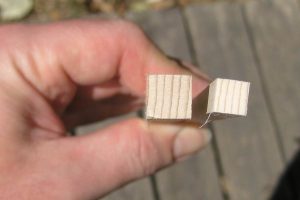 One of the things guitar builders worry about is grain direction. It’s generally agreed that quarter-sawn wood is the most stable, or at least that it moves in a predictable, uniform way when the relative humidity changes. It seems to bend more easily, without breaks, than flat-sawn wood (I prefer quarter-sawn sides and bindings for that reason). And everyone agrees that it is stiffer than flat-sawn timber.
One of the things guitar builders worry about is grain direction. It’s generally agreed that quarter-sawn wood is the most stable, or at least that it moves in a predictable, uniform way when the relative humidity changes. It seems to bend more easily, without breaks, than flat-sawn wood (I prefer quarter-sawn sides and bindings for that reason). And everyone agrees that it is stiffer than flat-sawn timber.
After handling quite a bit of brace wood, I began to question that last assumption. Continue reading “Brace Stiffness: Quarter-sawn vs Flat-sawn”
